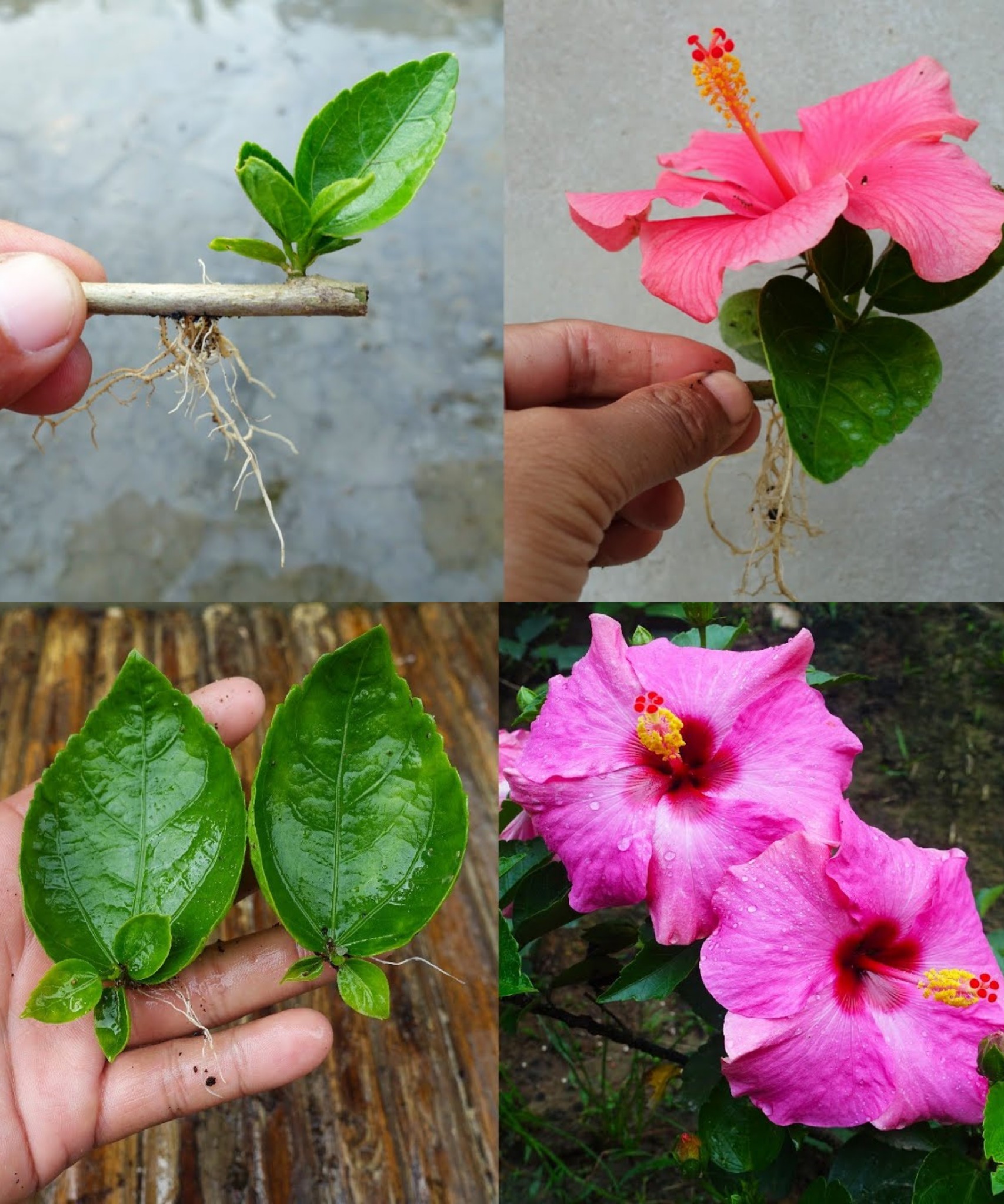Easy and Effective Propagating Hibiscus Trees with Air Layering!🌱
If you’re a fan of vibrant, tropical blooms, propagating hibiscus trees through air layering is a fantastic way to expand your garden with minimal effort. This simple technique allows you to create new hibiscus plants from an existing one without the need for complicated tools or equipment. Here’s how to do it:
What You’ll Need:
- Healthy Hibiscus Plant: Choose a healthy and mature hibiscus plant with flexible branches.
- Sharp Knife or Pruning Shears: You’ll need a clean, sharp knife or pruning shears to make precise cuts.
- Sphagnum Moss or Peat Moss: This will be used to wrap around the air layering area to promote root growth.
- Plastic Wrap or Aluminum Foil: To cover and secure the moss-wrapped area.
- Twist Ties or Plant Ties: These will help secure the plastic wrap or aluminum foil in place.
Step-by-Step Guide:
- Select a Branch: Choose a healthy, non-flowering branch from the hibiscus plant that is about pencil-thickness.
- Make a Diagonal Cut: Using a sharp knife or pruning shears, make a diagonal cut about halfway through the branch. This cut should be approximately 4-6 inches below a leaf node.
- Apply Rooting Hormone (Optional): Although not necessary, applying rooting hormone to the cut area can help stimulate root growth.
- Wrap with Moss: Take a handful of damp sphagnum moss or peat moss and wrap it around the cut area of the branch. Make sure the moss is securely wrapped and covers the entire cut.
- Cover with Plastic Wrap or Foil: Wrap a piece of plastic wrap or aluminum foil around the moss-covered area, ensuring it is tightly secured. This will help retain moisture and create a humid environment for root development.
- Secure in Place: Use twist ties or plant ties to secure the plastic wrap or aluminum foil in place. Make sure it is snug but not too tight to avoid damaging the branch.
- Wait for Roots to Form: Place the wrapped area in a warm, bright location with indirect sunlight. Check the moss periodically to ensure it remains moist.
- Transplant: After 6-8 weeks, check for root development by gently tugging on the branch. If resistance is felt, roots have formed. Carefully remove the plastic wrap or foil and moss, then cut below the rooted area and transplant into a pot filled with well-draining soil.
With this easy and effective method of air layering, you can propagate hibiscus trees and enjoy their stunning blooms in multiple areas of your garden or home. Happy gardening! 🌺
